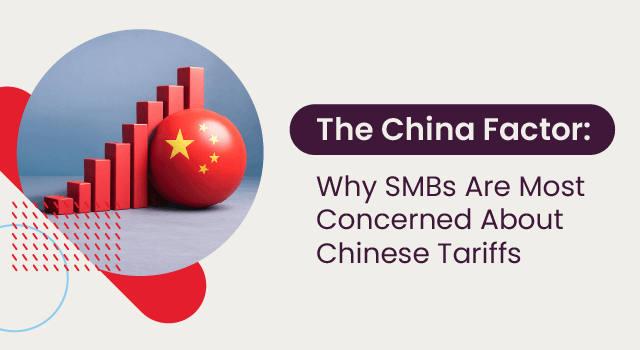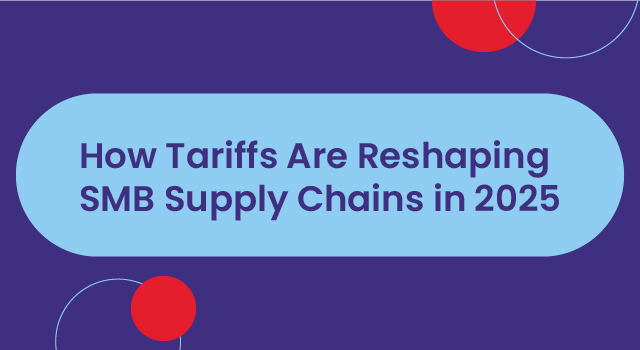Missing sales targets? Watching customers walk away? Your fill rate might be the culprit. This critical metric reveals how well you’re fulfilling customer orders on the first try—and directly impacts your bottom line.
What fill rate means for your business
Fill rate represents the percentage of orders you fulfill completely without backorders or stock-outs. When customers don’t receive their orders promptly, they don’t just lose patience—they also lose trust. And trust, once broken, is difficult to restore.
Beyond customer relationships, poor fill rates create a domino effect of operational headaches: rushed shipping, higher freight costs, and wasted labor hours reworking orders. By tackling fill rate issues head-on, you can stop this cycle, optimize inventory, and drive sustainable growth.
Why fill rate makes or breaks customer relationships
Your fill rate impacts four critical business areas:
Customer loyalty
Unless you consistently deliver products when customers need them, they’ll seek alternatives. Repeated stock-outs don’t just mean lost sales today—they drive customers straight to competitors tomorrow.
Inventory efficiency
Understanding why orders fail helps strike the perfect balance: enough stock to meet demand without tying up capital in excess inventory.
Revenue growth
Every fulfilled order strengthens customer relationships. Satisfied customers return and recommend your business, creating a foundation for organic growth.
Supply chain costs
Rush shipping to compensate for stock-outs eats into margins. Higher fill rates mean predictable shipping schedules and lower logistics costs.
Real success stories: Companies that transformed their fill rates
Race Winning Brands: from manual forecasting to data-driven decisions
Race Winning Brands (RWB), a leading manufacturer of high-performance automotive and powersports parts, struggled with inflexible forecasting systems based on basic calculations and cumbersome spreadsheets. Their approach couldn’t adapt to seasonal fluctuations or changing demand patterns.
After implementing Netstock, RWB gained real-time inventory visibility across their global operations. Even when faced with unexpected demand increases, the company maintained control of their inventory, always knowing which actions to take next.
Ubique Group: $10 million inventory reduction while improving service
Furniture and décor merchandiser Ubique Group was drowning in spreadsheets. Their basic forecasting tools couldn’t handle seasonal products or provide the SKU-level granularity needed for their 100,000+ product combinations.
After connecting Netstock to their data system, Ubique Group boosted their fill rate by 15% while simultaneously reducing operating inventory by $10 million. The platform enabled precise forecasting at the SKU, customer, and location levels while automatically accounting for seasonal patterns.
DCL Supply: from ‘inventory feast or famine’ to 98% fill rate
HVAC accessories distributor DCL Supply spent entire days manually analyzing hundreds of printed ERP reports. This time-consuming process left them with significant aged inventory and constantly swinging between excess stock and shortages.
With Netstock, DCL modernized their approach. “We modeled our fill rate, aligned it to the investment required, and executed confidently based on the system’s recommendations,” notes a company leader. The result? An impressive 98% fill rate and a 50% reduction in aged inventory.
Warwick Hanger: fill rate nearly doubled
Pipe hanger manufacturer Warwick Hanger faced a classic inventory challenge: frequent stock-outs alongside poorly managed growing inventory. After implementing Netstock, their fill rate jumped from 50% to 90%—nearly doubling their ability to fulfill orders completely on the first attempt.
Rutland UK: from good to great
Even companies with decent fill rates can find room for improvement. Door hardware specialist Rutland UK already maintained a respectable 92% fill rate while managing excess stock and lengthy four-month supplier lead times. After implementing Netstock, they pushed that number to 97%, driving noticeable sales growth despite persistent shipping delays.
How to calculate fill rate: simple math, powerful insights
Your order fill rate uses a straightforward formula:
Order Fill Rate = (Orders Shipped Completely / Total Orders Placed) × 100%
For example, if you received 100 orders this month and shipped 70 without any backorders:
Order fill rate = (70/100) × 100% = 70%
This baseline calculation provides immediate insight, but for accurate measurement, consider:
- Measurement timeframe: Define consistent periods (weekly, monthly, quarterly) for meaningful trend analysis
- Backorder handling: Standard calculations don’t distinguish between immediate fulfillment and backorders
- Partial fulfillment: Basic formulas count orders as either complete or incomplete, missing nuance
Beyond the basics: four fill rate metrics that matter
Different fill rate calculations reveal different aspects of your inventory performance:
Order fill rate
This measures your ability to fulfill an order completely with the first shipment. High order fill rates reflect effective inventory management systems, enabling efficient warehouse operations while building customer trust.
Line-item fill rate
When an order contains multiple product lines, this metric shows the percentage of individual lines fulfilled. It highlights problematic products that may be concealed within acceptable overall numbers.
For instance, if a single product consistently causes problems, you might have a forecasting issue or supply chain disruption affecting that specific item.
SKU fill rate
This granular metric tracks performance by individual variants—like specific sizes, colors, or models. Just as a clothing store missing your size creates frustration, customers experience the same when their specific product variant is unavailable.
Tracking at this level helps maintain the right mix of options to maximize sales opportunities.
Unit fill rate
This represents the percentage of total units shipped without backorders. If an order requests ten units across three products and you ship eight, your unit fill rate is 80%.
This granular view helps identify order fulfillment bottlenecks that other metrics might miss.
Market leaders setting the standard
Retail giants Walmart and Amazon have built their empires on optimized supply chains that prioritize high fill rates. Their ability to fulfill customer expectations consistently has helped them grow into dominant market forces with loyal customer bases.
Technology manufacturers Samsung and Apple have similarly structured their supply chains for reliability. Their customers trust product availability so completely that they willingly wait for new releases and pay premium prices.
In the fast fashion industry, Zara revolutionized the sector with a responsive supply chain that leverages collaboration among design, production, and inventory teams. Their real-time data and agile production enable a four-week turnaround from design to store shelves while maintaining exceptional fill rates.
Five practical strategies to boost your fill rate now
1. Upgrade your forecasting approach
Modern forecasting goes beyond numbers. Tools like Netstock incorporate market trends and supply chain variables into predictions, creating a more accurate picture of future demand.
Leading companies now leverage AI-powered analytics to identify subtle patterns humans might miss—especially valuable for businesses with seasonal fluctuations or complex product portfolios.
2. Align your inventory strategy with business goals
Effective inventory management balances three competing priorities:
- Consistently meeting customer demand
- Minimizing capital tied up in stock
- Optimizing operational costs
Depending on your business, consider implementing:
- Dynamic reorder points: Automatically adjust inventory levels based on current demand patterns
- Just-in-Time delivery: Particularly effective in manufacturing with predictable demand
- Vendor-managed inventory: Shift replenishment responsibility to suppliers who can monitor stock levels
Select approaches that align with your product’s specific characteristics and business model.
3. Build stronger supplier partnerships
Today’s supply chain technology enables transparency and collaboration. Shared data systems support contingency planning and help everyone respond quickly to disruptions.
Collaborative forecasting aligns capacity with demand throughout the supply chain, reducing stock-out risks and streamlining material flow to meet customer expectations.
As Race Winning Brands discovered, better supplier visibility helps manage even significant demand fluctuations without losing control of inventory.
4. Optimize warehouse operations
Modern warehouses leverage automation throughout the fulfillment process. Warehouse Management Systems enable real-time tracking and optimized picking routes, improving accuracy and operational efficiency.
Route optimization software similarly minimizes delivery distances, reducing costs while speeding customer deliveries—all contributing to higher fill rates.
5. Commit to regular performance reviews
Consistent KPI monitoring reveals improvement opportunities before they become problems. Schedule regular reviews of:
- Fill rate trends across different metrics
- stock-out frequency and patterns
- Excess inventory levels
- Lead time reliability
- Forecast accuracy
This consistent oversight helps you adapt quickly to changing market conditions and maintain optimal inventory levels.
Your next step: transform fill rates with Netstock
Fill rate analysis reveals bottlenecks and inefficiencies throughout your supply chain. When you improve this crucial KPI, you deliver better customer experiences, increase sales, and gain a competitive advantage.
As customer expectations continue rising, fill rate performance will only become more critical to business success. Technologies such as real-time inventory tracking, predictive analytics, and automated ordering enable forward-thinking companies to stay ahead.
As Rubin Chen, VP of Supply Chain Planning at Ubique Group, explains: “My team implemented Netstock because we knew, loved, and had success with it in the past.” Their 15% fill rate improvement, achieved while reducing inventory by $10 million, demonstrates the power of the right solution.
Are you ready to join industry leaders like Race Winning Brands, Ubique Group, DCL Supply, Warwick Hanger, and Rutland in transforming your inventory performance?




